When Did Anne and Her Family Go Into Hiding
Seventy-five years after its publication, "The Diary of Anne Frank" remains amongst the most widely-read books in the world. Blinkering between hope and despair, the business relationship of a Jewish teenager's life in hiding in an annex behind an Amsterdam warehouse, gave voice and a face to millions of victims of the Nazi genocide, nonetheless one question has gone stubbornly unanswered all these years: who alerted the Nazi search team, in 1944, to Anne Frank and her family'southward hiding identify? Two Dutch police inquiries and countless historians have come up up with theories, but no firm conclusion.
And then, in 2016, a team of investigators, led by a veteran FBI agent, decided to bring modern crime-solving techniques and engineering science to this cold case. And now, they believe they accept an respond—ane we'll share with you lot tonight—to a question that's bedeviled historians, and haunted Kingdom of the netherlands: who was responsible for the betrayal?
Vince Pankoke had turned in his badge and gun. He was two years into a comfortable Florida retirement, when his phone rang in the spring of 2016.
Vince Pankoke: I received a call from a colleague from the netherlands who said, "If you—if you're done laying on the embankment, we accept a case for you."
Jon Wertheim: Were you laying on the embankment?
Vince Pankoke: I was actually driving to the beach. I due west— (LAUGH) I wasn't quite at that place yet.
Pankoke spent three decades as an FBI special agent, targeting Colombian drug cartels. His piece of work had also taken him to the netherlands, where his investigative chops left an impression.
Jon Wertheim: Were you looking to get back when he told you what it was nigh?
Vince Pankoke: After he told me it was to, yous know, try to solve the mystery of what caused the raid—for Anne Frank and the others in the addendum. I needed to hear more.
Four-one thousand miles away, in Amsterdam, Thijs Bayens a Dutch filmmaker and documentarian, had been asking around for a credentialed investigator to dig into a question that he feels The netherlands has never quite reckoned with, 1 that gets to the essence of homo nature.
Thijs Bayens: For me, information technology was actually important to investigate what makes united states of america-- give up on each other. The area where Anne Frank lived is very normal. And it'south a very warm area with the butcher and the doctor and the policeman. They worked together. They loved each other. They lived together. And all of a sudden people commencement to betray on each other. How could that happen?
Jon Wertheim: Of the millions, literally millions of stories to come up out of the Holocaust, why do yous think this 1 resonates the way it does?
Thijs Bayens: I call up correct later on the war people were shown the concentration camps, the atrocities that took place, the horror. And, suddenly you find this innocent, beautiful, very smart, funny, talented daughter. And she as a lighthouse comes out of the darkness. So I remember humanity said, "This is who we are.
Betraying fellow Dutch to the Nazis was a criminal law-breaking in the netherlands, only two constabulary probes and a whole library of books dedicated to the Anne Frank case, yielded neither convictions nor definitive conclusions.
Jon Wertheim: This question of who betrayed Anne Frank, that had been investigated for years. What was gonna make your investigation different than the ones before it?
Thijs Bayens: If it's a criminal act, information technology should be investigated by the police force. So we gear up it upwardly equally a cold case.
Like so many, Pankoke had read the diary in centre school in Western Pennsylvania and information technology left a mark. In that location would be no perp walks or busted law-breaking syndicates hither, merely he was intrigued… cautiously.
Jon Wertheim: Y'all hear, "We're gonna go back and await at Anne Frank." And that might have the ring of some schlocky media creation. Did that worry y'all?
Vince Pankoke: Oh, it did. Information technology did. Because as a career investigator, I didn't wanna be associated with any type of a tabloid type investigation.
Jon Wertheim: You had to make certain this was serious.
Vince Pankoke: Let's face it. I mean, the honor of the diary, the honor of Anne Frank, we had to treat this with utmost respect.
What ultimately sealed it for Vince Pankoke, the guarantee of absolute autonomy. The ground rules: Thijs Bayens would oversee the operation and could moving picture the process for a documentary he'south been making. There would be a volume about it, which helped finance the project along with funding from the urban center of Amsterdam, merely this was going to exist an contained undertaking with serious investigators. And Vince Pankoke was going to have the lead earthworks in.
Jon Wertheim: Y'all'd washed common cold cases before. Before this, what was the biggest gap in time between when you were approached and when the— the law-breaking occurred?
Vince Pankoke: It was nigh a five-year crime at that point.
Jon Wertheim: It'south 75 years. So a lilliputian dissimilar.
Vince Pankoke: It'due south a lot dissimilar.
Jon Wertheim: This is more cold.
Vince Pankoke: This— aye. This was frozen.
To chip away, Pankoke had to draw upwardly his own design. He knew that there was going to exist more than information to plow through than any homo could handle and that bogus intelligence could be a secret weapon.
An FBI man's dream squad was assembled… an investigative psychologist, a state of war crimes investigator, historians, criminologists plus an ground forces of archival researchers.
Jon Wertheim: What did all these people with disparate skills bring to this?
Vince Pankoke: They brought a different view. It was all of these skills that assistance us sympathize and put into context, a criminal offence that happened, you know, in 1944. We have to look at things differently.
Together, they dove into a familiar story: the Frank family unit had moved to Amsterdam from Frg to escape the ascension of Hitler. They found safety in Kingdom of the netherlands, where Otto Frank ran a manufacturing business. But then the Nazis invaded in 1940, ii years subsequently, the Franks—Otto, wife Edith, Anne and her sister Margot—forth with 4 other Jewish friends of the family went into hiding in an addendum behind Otto'due south warehouse. Today, it's preserved as a museum. Dr. Gertjan Broek, a historian at the Anne Frank Business firm, showed u.s.a. in.
Jon Wertheim: Oh, wow. This— this is the famous—
Dr. Gertjan Broek: This is the bookcase.
Jon Wertheim: —bookcase.
Dr. Gertjan Broek: This is the bookcase. It was used to camouflage the entrance to the hiding place.
The bookcase helped protect the Franks, as did a handful of Otto'southward close colleagues at the warehouse who were in on the secret.
Dr. Gertjan Broek: We go inside, mind your head.
Jon Wertheim: Oh, wow.
Afterward the raid, the Nazis took anything that wasn't nailed downwards. Recreations show what information technology looked like. Two crammed floors, 761 days, more 2 excruciating years indoors. The office workers brought food and supplies, merely the eight in hiding couldn't make a sound during the day. Past night they could listen to the radio, desperately plotting updates from the front on this map.
Dr. Gertjan Broek: Hither'south a paper clipping from shortly after D-Day, and then June, 1944. With the pins that tried to follow the advances of the allied troops in the days and weeks probably subsequently.
Jon Wertheim: This is June, 1944—
Dr. Gertjan Broek: 4 June—
Jon Wertheim: —so...
Dr. Gertjan Broek: So there's hope considering Centrolineal forces are on the style. Their life depended on what would happen.
Anne's bedroom walls, familiar to any teenager, preserved from the twenty-four hours she was taken abroad. Here, she chronicled the monotony and the horror of life in hiding. "Outside things are terrible, day and night," she wrote in January 1943. "These poor people are existence dragged abroad, with nothing simply a haversack and a lilliputian scrap of money."
Her last entry was dated August 1st, 1944. She was 15.
Jon Wertheim: Take me to the twenty-four hour period of the raid. It's the summer of 1944 and what happens that day?
Dr. Gertjan Broek: It'south a warm day, sunny. And effectually 10:30, betwixt 10:xxx and xi:00, a couple of men walk in.
They were detectives with a Dutch police unit working with the Nazis. An SS officeholder named Silberbauer led the team. They demanded to be shown around the warehouse.
Dr. Gertjan Broek: They end upward in front of the bookcase, which is hiding the entrance to the annex. And information technology's important I recollect to realize that ii of the policemen present had been seasoned detectives, well experienced. They had been searching this type of building in the inner city of Amsterdam before.
They knew there was likely something behind that bookcase. The stunned inhabitants they found were marched out. On the floor behind them, Anne's diary—which a quick-thinking function worker, loyal to the Franks, preserved. Of the eight taken away, Otto Frank was the only survivor. The others were amongst the 100,000 Dutch Jews—three-quarters of the country'due south Jewish population—to dice at the hands of the Nazis.
In an interview with CBS in 1964, Otto recounted what happened when his family was put on the cattle cars to Auschwitz a month after their capture.
Otto Frank: On September 4th, 1944, the last transport went to Auschwitz. Well, when we arrived at Auschwitz in that location were men continuing in that location with clubs—women here, men there. We were separated right on the station, so women went to Birkenau Camp and nosotros went to Auschwitz Camp from the station and I never saw my family again.
Subsequently the state of war, Otto Frank was adamant to find out who betrayed the hiding identify to the Nazis. It was the question many readers asked afterwards he published his daughter's diary in 1947. But subsequently a couple of years, Otto abruptly stopped looking—more on that curious decision, later. When Vince Pankoke went to Amsterdam to brainstorm his search, his first stop, naturally, was the scene of the criminal offence.
Vince Pankoke: I called this the most visited crime scene in the world because so many people from all over the world, y'all know, millions of people come here.
Jon Wertheim: So when yous come here for the first time, what are yous looking for?
Vince Pankoke: Well, equally an investigator I wanna see what's in the area. Of course I wanna see inside the building. I wanna reconstruct how the actual arrest took identify, and who participated in it.
Pankoke and his team spent hours in the annex looking for any clue, withal remote.
He also cased the exterior—today near exactly equally it was then.
Vince Pankoke: This is the courtyard that is behind the addendum. And it's—every bit y'all can see, it'south totally enclosed. This courtyard area is surrounded by the buildings of the neighborhood.
Jon Wertheim: I'm thinking one cough that gets overheard, 1 window that happens to be open at the wrong fourth dimension, the sheer gamble gene here is extraordinary.
Vince Pankoke: It is extraordinary. When we get-go started the instance, one of the theories that was out there is that the raid may have been acquired by somebody in the firsthand area seeing something, hearing something, and reporting it. Then, therefore, we tracked and identified every resident that lived in this block and next streets.
Using the artificial intelligence programme, Pankoke and his team mapped potential threats. In the courtyard surrounding the annex, they found Nazi party members and even known informants.
Vince Pankoke: All living just a wall or ii away from one another. When you accept a look at the threats the question isn't, you know, what caused the raid. The question might be: how did they last more than two years without being discovered?
Jon Wertheim: It strikes me in a example like this, anyone could exist a suspect. A Nazi sympathizer, an informant, someone who happens to walk past and hear a coughing. How did yous navigate that?
Vince Pankoke: We had to consider all those options. The squad and I sabbatum down and nosotros compiled a list of ways in which the addendum coulda been compromised. You lot know, was it carelessness of the people occupying the annex possibly making too much noise or beingness seen in the windows? You lot know, was it expose?
Jon Wertheim: There is a theory out there that no one betrayed the Frank family. This was coincidence, or this was good detective work. You buy that at all?
Vince Pankoke: No. No. I mean, we took that theory apart, you know, bit by fleck.
Jon Wertheim: This doesn't play out the way it does, just for a specific tip.
Vince Pankoke: Exactly.
Vince Pankoke, the 30-yr FBI veteran, had worked plenty of cold cases, but none this cold. It had been more than seven decades since Anne Frank and her family unit had been discovered in their hiding place in central Amsterdam and ultimately put on cattle cars to Auschwitz. As to the question of who betrayed the family to the Nazis, all the witnesses were long dead, their show thinned by time, simply Pankoke leaned on decades of experience and intuition, starting with the old case files.
Vince Pankoke: In a normal cold case, you go to a file. Yous pull information technology out. You read through everything that the previous investigation did. Interviews, leads that were followed up on.
Two previous Dutch law investigations into the raid on Anne Frank's hiding place - 1 in 1948 and another in 1963 - were not exactly masterclasses in detective piece of work. And a lot of time had passed.
Vince Pankoke: The files were incomplete. And they were scattered well-nigh in probably a dozen unlike archives. Reports were missing. Witnesses had passed on. Memories had failed.
Pulling from the standard common cold case playbook, Vince Pankoke followed up on what leads he could. Otherwise he and his squad had to take a fresh approach. They spent years in places like the Amsterdam city archives, where the meticulous Dutch record-keeping used so brutally by the Nazis proved a major asset to the investigation.
Along with Pieter van Twisk—a veteran Dutch journalist who co-founded this project and led the research squad—they showed us a trove of items they dug up. Including a residence bill of fare belonging to Anne frank.
Pieter van Twisk: Yous can come across here her proper name: her first name, second name, and her surname; and the appointment of birth. Here you see "N.I.", which stands for Nederlands. Israelis, which is her religion.
Jon Wertheim: "Netherland Israeli." And then this—
Pieter van Twisk: Aye, I don't—
Jon Wertheim: —she'southward Jewish.
Pieter van Twisk: —know why. That'south Jewish, she was Jewish, yeah,
Jon Wertheim: Every Dutch resident had to take one of these?
Pieter van Twisk: Yah. Yah.
Jon Wertheim: This is— This is very detailed, and this has her— her parents' birthdates on it.
Pieter van Twisk: Yah. That's, of course, also why it was quite like shooting fish in a barrel for the Nazis to find people in kingdom of the netherlands, and to know if who was Jewish, or who was not Jewish.
Jon Wertheim: One piece of paper in the '40s, and you've got everything y'all could desire to know near someone.
Pieter van Twisk: Yah.
The team fed every morsel they could—messages, maps, photos, even whole books—into the bogus intelligence database, adult specifically for the project. Then they permit machine learning do its thing.
Vince Pankoke: It would identify relationships between people, addresses that were akin. And we were looking for those connections. Clues to solving this.
Jon Wertheim: Quantify how much fourth dimension that saved you.
Vince Pankoke: Oh—thousands and thousands of man-hours.
Jon Wertheim: This as well tells you what's garbage, what's excluded, what isn't gonna help your case.
Vince Pankoke: Oh, yeah, because much of what we exercise is eliminating the unnecessary.
The team paid particular attention to arrest records from the time. The Nazis were hellbent on ridding the Netherlands of all Jews, part of the Final Solution. By 1942, the Franks were among some 25,000 Jews in hiding across the country. The Nazis were coldly skilled at getting people to talk.
Vince Pankoke: Their typical MO was one time they arrested somebody, the kickoff question that was posed to them, "Practise you know where any other Jews are in hiding?" So what we did is we chronicled all the arrests prior to and simply after the addendum raid to try to discover any connexion, any loose thread that would show us that they went from one abort to another and then ultimately to the annex.
Jon Wertheim: And the implication is, "I'll make your sentence more lenient if you requite up some names."
Vince Pankoke: Yep.
Jon Wertheim: Effective?
Vince Pankoke: Oh, information technology was very effective.
Earlier long, suspects emerged. Dozens of them, like Willem van Maaren, an employee in the warehouse where the Franks were hiding, whom the Dutch police had interviewed in their investigations.
Vince Pankoke: He was prime suspect number one subsequently the war. He'south working downstairs in the warehouse. He was very shifty, suspicious. Actually a thief.
Jon Wertheim: And so yous say shifty, suspicious, thief. And nonetheless, you lot eliminated him equally a doubtable.
Vince Pankoke: Not a betrayer, though. He was non antisemitic. He had incentive not to betray them because if he did, he would have lost his job, the business organization would have been closed.
Jon Wertheim: What specifically are you looking for when you're considering suspects?
Vince Pankoke: We're looking at, did they have the knowledge? Nosotros await at their motive. You know, what would the motive be? Were they antisemitic? Were they trying to do this for coin? So opportunity. Were they even in town?
Jon Wertheim: Then this—knowledge, motive, opportunity, that'south I'thou guessing what you were using when you're infiltrating drug cartels. I mean, this is standard FBI technique—
Vince Pankoke: Information technology's standard police enforcement technique.
Jon Wertheim: What kind of a person would betray the Frank family?
Bram van der Meer: You would expect maybe that a very bad person did this, a person with—I would say a psychopathic mind would, would exercise this.
Bram van de Meer knows psychopathic minds. He had been an investigative psychologist with the national police force force in the Netherlands. On Vince Pankoke's team, he analyzed the behavior and mindsets of suspects they were considering.
Jon Wertheim: That'south your commencement instinct? So it had to be a psychopath to do this?
Bram van der Meer: Yep. Merely yous have to exist so very conscientious. It's war. Y'all're surviving. Your 24-hour interval-to-day life is filled with fear. Your family might be arrested the adjacent mean solar day. You're thinking everyday about your ain survival. So that's the context.
Jon Wertheim: In a vacuum it had to be a psychopath to do this. But given the context--
Bram van der Meer: That's right.
Jon Wertheim: Then what kinda person might exercise this?
Bram van der Meer: Yeah, and and so—and so yous end up in, in a situation where it could be anybody.
Over time, their focus shifted to someone who, on the surface, might non have raised suspicions. This suspect wasn't a neighbor of the Franks and didn't piece of work for them. Merely the FBI man's sixth sense kicked in. Arnold van den Bergh was a prominent Jewish man of affairs with a wife and kids in Amsterdam. Later the invasion, he served on the Jewish quango, a body the Nazis set, nefariously, to behave out their policies within the Jewish community. In commutation for doing the Nazis' bidding, members might be spared the gas chambers.
Vince Pankoke: We know from history that the Jewish Council was dissolved in late September of 1943 and they were sent to the camps. We figured, well, if Arnold van den Bergh is in a camp somewhere, he certainly can't exist privy to information that would atomic number 82 to the compromise of the addendum.
Jon Wertheim: Was he in a army camp somewhere?
Vince Pankoke: Well, we thought he was. So due diligence, we started a search. And we couldn't find Arnold van den Bergh or any of his immediate family members in those camps.
Jon Wertheim: Why not?
Vince Pankoke: Well, that was the question. If he wasn't in the camps, where was he?
Turned out, he was living an open life in the middle of Amsterdam, Vince Pankoke says, simply possible, if Van den Bergh had some kind of leverage.
Jon Wertheim: To my ears, you're describing an operator. Is that fair?
Vince Pankoke: I'd telephone call him a chess role player. He idea in terms of layers of protection, past obtaining dissimilar exemptions from being placed into the camps.
As it happened, Van den Bergh—who died in 1950—had come up up before, in a report from the 1963 investigation. Though astonishingly, there was fiddling apparent follow upward by law.
Vince Pankoke: Nosotros read just one minor paragraph that mentioned that during the interview of Otto Frank, he told them that soon subsequently liberation, he received an anonymous note identifying his betrayer of the address where they were staying, the addendum, as Arnold van den Bergh.
Jon Wertheim: Look, wait. So, in the files, at that place'south reference to a note that Otto Frank received that mentions this specific proper noun?
Vince Pankoke: Remarkably then. Yes. It'south listed right at that place.
The note was so hitting to Otto Frank that he typed upward a re-create for his records. Naturally, the veteran FBI man wanted to know: where was that annotation? Any seasoned investigator will tell yous that, ideally, practiced shoe leather comes garnished with skillful luck. In 2018, Vince Pankoke and team located the son of one of the former investigators. There in the son's domicile, cached in some onetime files: Otto'southward copy of the note.
Jon Wertheim: I just wanna get this straight. You're talking to the son of an investigator. He says, "Yeah, 50 years ago my dad looked into this and I might accept some material."
Vince Pankoke: Yep. Nosotros were lucky.
Jon Wertheim: You've held the metaphorical smoking gun in your mitt before in the FBI. This bearding note. Does it experience like a smoking gun?
Vince Pankoke: Not a smoking gun, merely it feels like a warm gun with the show of the bullet sitting nearby.
Back at the archives, they showed it to u.s., Otto's re-create. The squad used forensic techniques which they say authenticates information technology. That handwriting you lot see: the scribblings of the 1963 detective. The anonymous annotation informed Otto that he'd been betrayed by Arnold van den Bergh who'd handed the Nazis an entire listing of addresses where Jews were hiding.
Vince Pankoke: Whoever it was that authored this anonymous note knew then much, that knew that lists were turned in.
Jon Wertheim: And this is data you were able to approve.
Vince Pankoke: Pieter was able to locate, in the national archive, records that indicated that in fact somebody from the Jewish Council, of which Arnold Van Den Bergh was a member, was turning over lists of addresses where Jews were in hiding.
Jon Wertheim: So what's your theory of the case here? How and why would Arnold van den Bergh have betrayed the Frank family?
Vince Pankoke: Well, in his role every bit being a founding fellow member of the Jewish Quango, he would have had privy to addresses where Jews were hiding. When van den Bergh lost all his series of protections exempting him from having to go to the camps, he had to provide something valuable to the Nazis that he's had contact with to let him and his wife at that time stay safe.
Jon Wertheim: Is there any evidence he knew who he was giving up?
Vince Pankoke: There's no bear witness to indicate that he knew who was hiding at any of these addresses. They were just addresses that were provided that where Jews were known to have been in hiding.
We contacted the foundation Otto Frank started in Switzerland and the Anne Frank Firm in Amsterdam—neither of which formally participated in the investigation—to try to observe out whether they could provide whatever other prove that might implicate or clear Arnold van den Bergh. The Anne Frank house said they could not. The foundation is reserving comment until they've seen the entire results of the investigation.
The common cold case squad began to face up the real possibility that Otto Frank might have known the identity of the betrayer. What reason, they wondered, would Otto accept had to keep this to himself?
Vince Pankoke: He knew that Arnold van den Bergh was Jewish, and in this flow later the war, antisemitism was nonetheless around. And then perhaps he only felt that if I bring this up again, with Arnold van den Bergh beingness Jewish, it'll only stoke the fires further. Merely we accept to keep in mind that the fact that he was Jewish just meant the he was placed into a untenable position by the Nazis to do something to save his life.
The squad wrestled with these ethical questions. Thijs Buyens, the filmmaker and documentarian who conceived of the project, wondered whether the revelation would be fodder for bigots and antisemites.
Jon Wertheim: The conclusion was that this culprit was a Jewish homo who by all accounts was doing what he did to protect his own family.
Thijs Bayens: Aye.
Jon Wertheim: What was your emotion when yous heard this?
Thijs Bayens: I found information technology very painful. Perchance yous could say I fifty-fifty hoped it wouldn't exist something like this.
Jon Wertheim: Why?
Thijs Bayens: Considering I feel the pain of all these people being put in— in— in a situation which is very hard for the states to understand.
Jon Wertheim: I doubtable when this is revealed people around the world are gonna be uncomfortable with the thought that a Jew betrayed some other Jew.
Thijs Bayens: I hope so.
Jon Wertheim: Yous hope they volition be?
Thijs Bayens: Yes. Considering it shows you lot how bizarre the Nazi government really operated, and how they brought people to do these terrible things. The— the real question is, what would I have done? That's the real question.
Throughout the project, Bayens sought counsel from Menachem Sebbag, an Orthodox rabbi in Amsterdam who also serves equally main Jewish chaplain in the Dutch Army.
Jon Wertheim: Is a greater practiced being served here?
Menachem Sebbag: I hope and so. I truly hope so. I hope that people will empathize that i of the things that the Nazi ideology did during the Holocaust was to dehumanize Jewish people. And going back into history and looking for the truth and attaining truth is really giving the Jewish people back their ain humanity. Fifty-fifty if that means that sometimes Jewish people are seen as non interim morally correct. That gives them back their own humanity, because that's the mode man beings are when they're faced with existential threats.
After years of investigating this seven-decade-old cold example, we had a hypothetical for Vince Pankoke.
Jon Wertheim: Y'all're back to beingness an FBI amanuensis. Y'all've got this case you lot've built. You've got your evidence and you mitt it over to the prosecutor, the U.S. attorney. You think you're getting a conviction?
Vince Pankoke: No. At that place could be some reasonable incertitude.
Jon Wertheim: To exist articulate, information technology's a coexisting case.
Vince Pankoke: It is a coexisting case, equally many cases are. In today's offense solving, they want positive DNA prove or video surveillance tape. We tin can't give you any of that. Just in a historical case this onetime, with all the prove that nosotros obtained, I call back information technology'southward pretty convincing.
Now dorsum in retirement, Vince Pankoke thinks he's glimpsed a new manner to thaw cold cases. He marvels that an investigation that put no one behind confined, turned out to be the most significant example of his career and one, he believes, brought an reply to a painful historical question.
Produced past David One thousand. Levine. Associate producers, Jacqueline Kalil and Elizabeth Germino. Broadcast assembly, Annabelle Hanflig and Eliza Costas. Edited by Michael Mongulla.
Source: https://www.cbsnews.com/news/anne-frank-betrayal-investigation-60-minutes-2022-01-16/
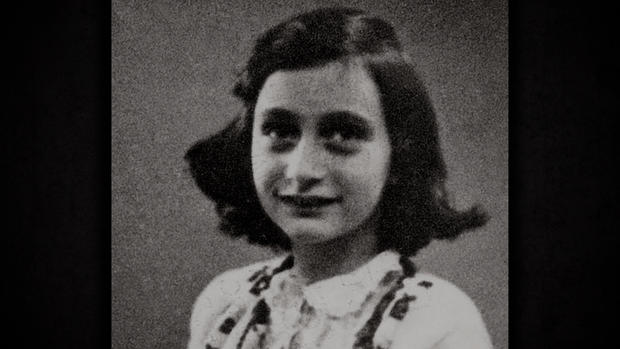
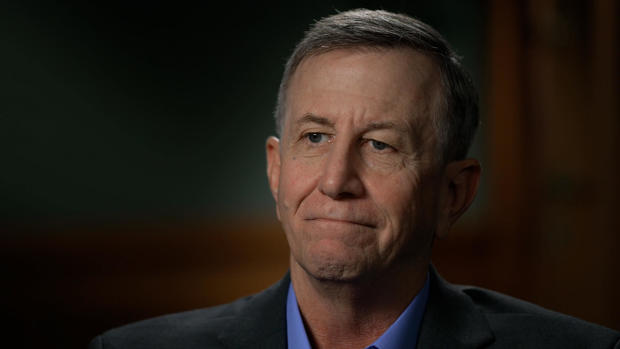
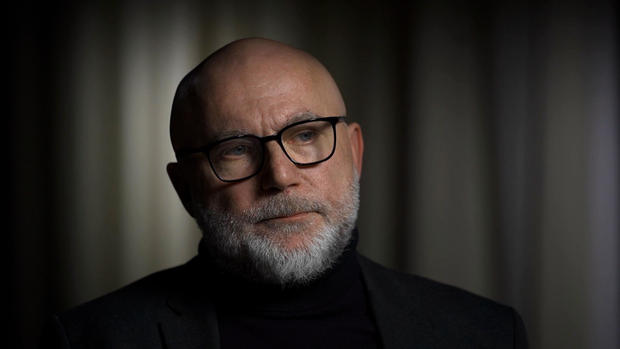
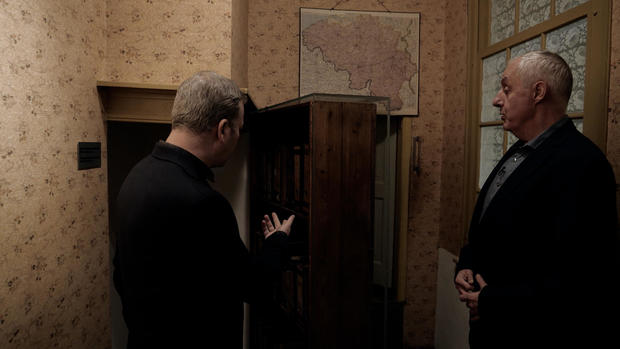
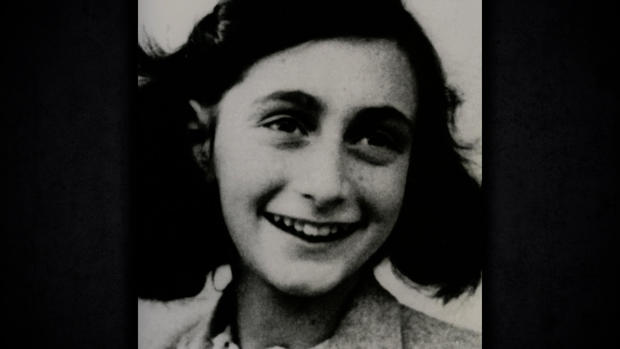
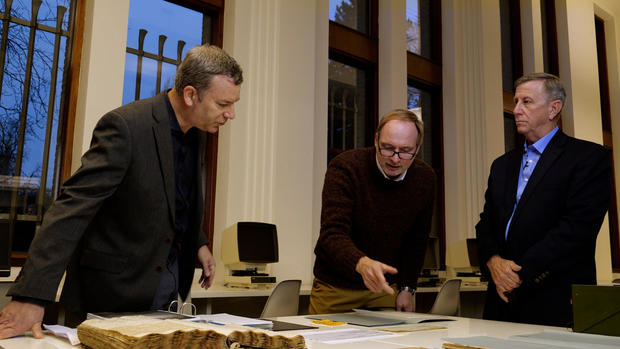
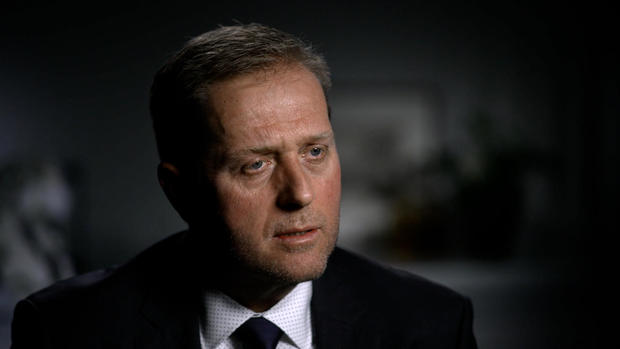
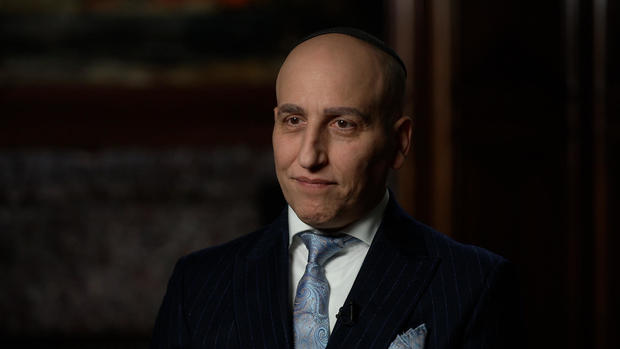
0 Response to "When Did Anne and Her Family Go Into Hiding"
Post a Comment